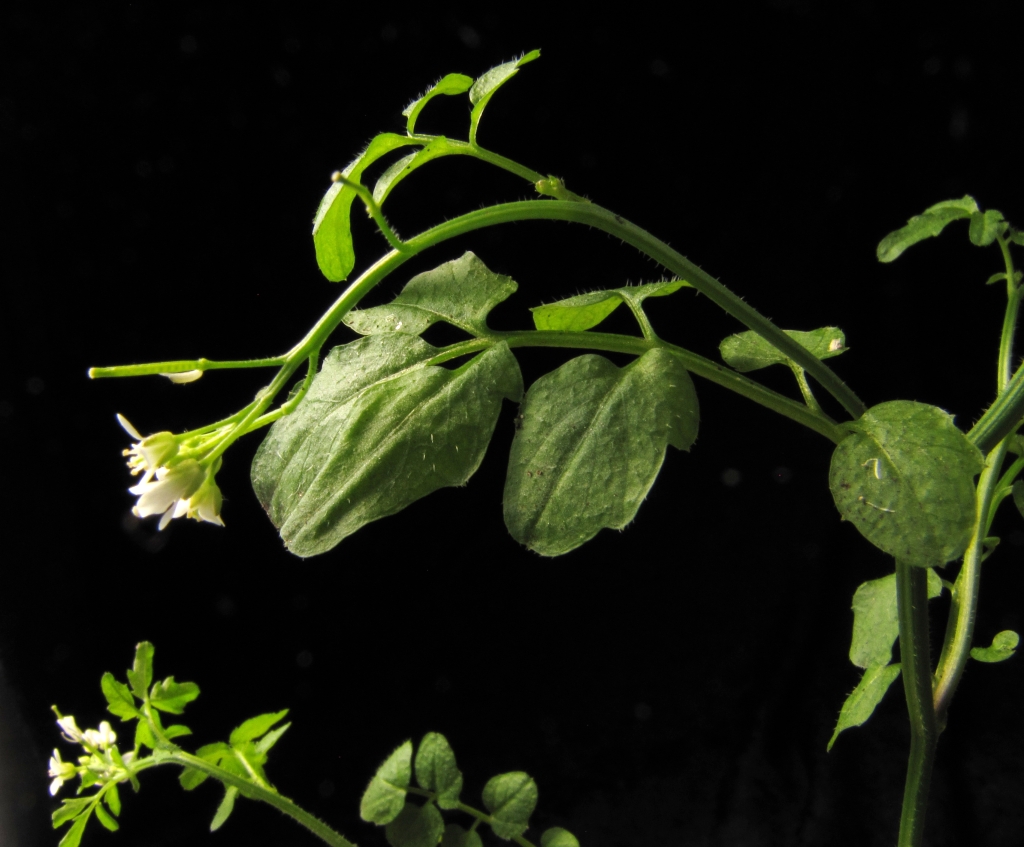Cardamine
Annual or perennial herbs, with simple hairs or glabrous. Flowering stems mostly erect, variably leafy. Basal leaves usually long-petiolate, pinnate, terminal pinna larger than lateral pinnae; cauline leaves smaller, mostly pinnate to pinnately divided. Inflorescence a raceme. Sepals ovate to oblong, equal or nearly so; petals clawed or not, mostly white, sometimes absent; stamens 4 or 6 (usually 6 in Victoria); stigma entire or shortly bilobed. Fruit elongate (at least 3 times as long as broad), linear, explosively dehiscent (valves separating suddenly from the base); valves flat, venation usually inconspicuous, partition (replum) with flanged margin, remaining after dehiscence; seeds in one row per locule.
About 200 species world-wide, mainly in temperate regions, but genus in need of a major revision; in Australia, 13 species native and 3 naturalized.
In the key, the leaf-blade of simple leaves is referred to as the 'terminal pinna'. The term 'pinna' refers both to leaflets of pinnate leaves and to lobes of pinnately divided leaves when they resemble leaflets (i.e. narrower towards the base). Most species produce secondary inflorescences on flowering stems arising from the base of the primary stem or from cauline leaf-axils. These inflorescences are usually fewer-flowered than the primary inflorescence. In this key, the number of flowers per raceme refers to the primary inflorescence.
Thompson, I.R. (1996). Cardamine. In: Walsh, N.G.; Entwisle, T.J., Flora of Victoria Vol. 3, Dicotyledons Winteraceae to Myrtaceae, pp. 434–442. Inkata Press, Melbourne.
 Spinning
Spinning


